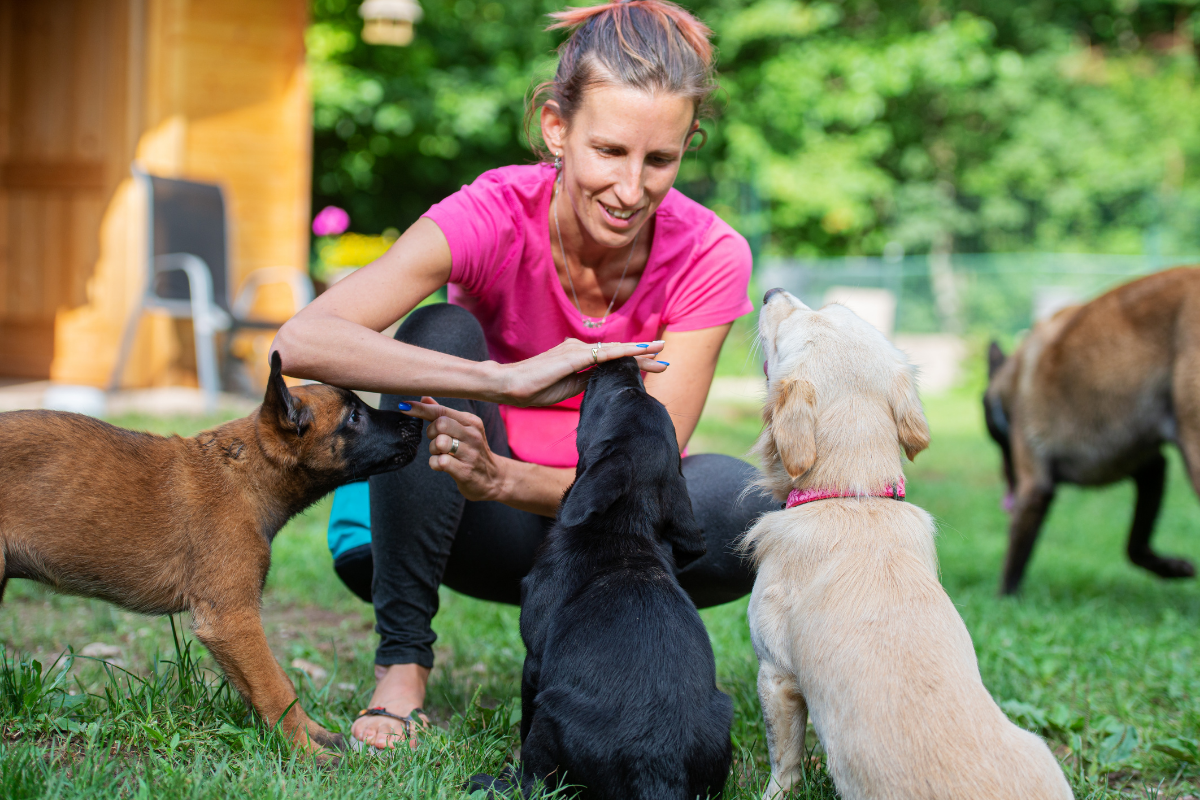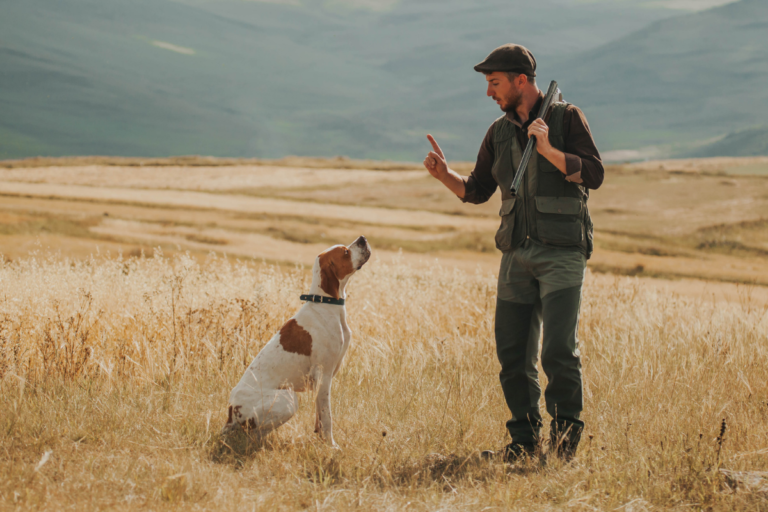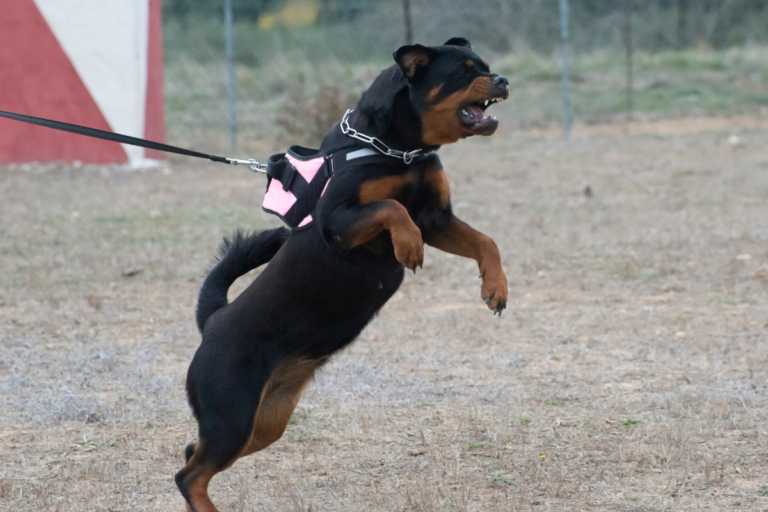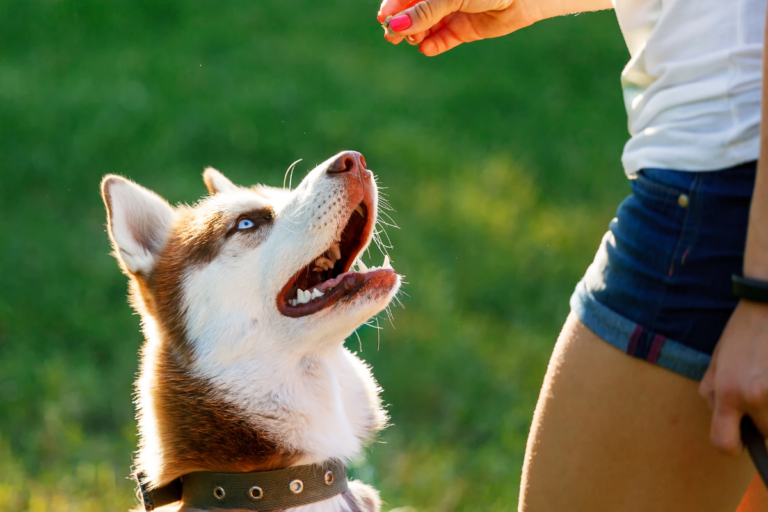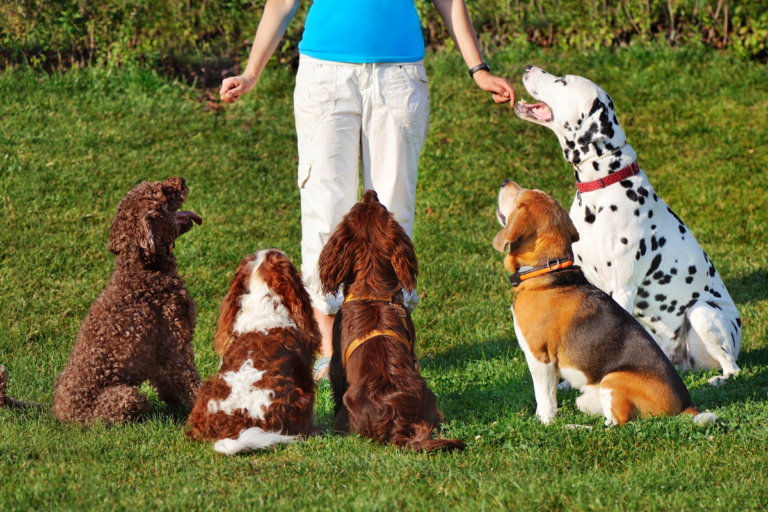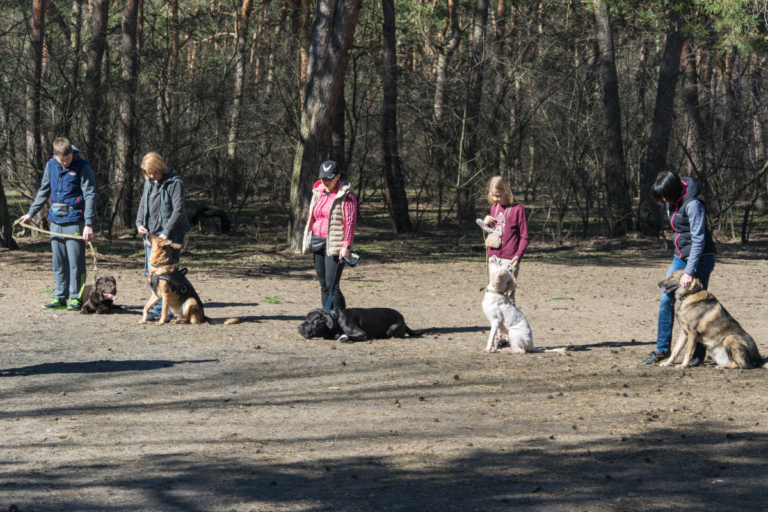Join the Paw-some Journey: Enroll in Top Puppy Training Classes!
Benefits of Puppy Training Classes
Signing up for puppy school has loads of perks for both pooch and parent. These sessions are all about creating positive vibes, sorting out any behavioral hiccups, and growing a tight-knit bond. Let’s chat about what makes these classes a win-win.
Strengthening the Dog-Owner Bond
Puppy training classes are game-changers when it comes to tightening the bond between us and our little ball of fur. They help us chat better with our pups, getting a peek into what they need and who they are at their core (Animal Humane Society). Practicing commands and exercises together builds trust and makes hanging out with our pups more rewarding.
What we get up to in these classes:
- Learning the basics like sit, stay, and come.
- Calling them back to us.
- Playing games that involve teamwork.
Keep doing these fun activities, and our bond with our dogs just gets stronger. Want more ways to connect? Check out our k9 dog training guide for some neat tricks.
Addressing Behavioral Challenges
These puppy classes aren’t just about fun and games; they tackle those annoying behaviors head-on. We manage stuff like over-the-top barking, hyper jumping, or making a mess, all in a friendly setting (Animal Humane Society).
Here’s what we focus on:
| Behavior | Training Strategy |
|---|---|
| Barking too much | Learn to shush, calm cues |
| Jumping up | Sit and stay commands |
| Chewing stuff | Giving chew toys, redirecting them |
Sorting these habits out early makes home life smoother and hassle-free. We pick up handy tricks and tips during these classes to tackle unwanted behaviors with ease. If you’re keen to explore more about handling naughty behaviors, dive into aggressive dog training.
Joining puppy training classes doesn’t just build our relationship with our dogs but also makes everyone’s life more chill and fun. It’s an educational ride that’s worth every minute for any dog owner. Browse through our dog training classes section to find the perfect class for you and your furry buddy.
Importance of Proper Communication
Getting along with our furry pals is all about good chat skills. Understanding what our dogs need and sorting out any behavior hiccups with training makes them well-behaved and keeps their tails wagging.
Understanding Your Dog’s Needs
Knowing what makes your dog tick is the ticket to great communication. Just like people, every pooch has its own vibe. Tuning into their unique quirks can seriously boost our bond with them. Jumping into some puppy training classes can teach us how to read their signals and respond like a pro.
The Animal Humane Society found that these classes tighten the bond between dog-parents and dogs by sharpening trust and communication. Owners learn the knack for picking up on their dog’s body language and vocal cues, which is a must for getting a grip on their wants and feelings.
- Regular Schedule: Keep things regular. Dogs dig routines, so stick to a schedule for feeding, potty breaks, play, training, and naps (The Puppy Academy).
- Positive Reinforcement: Throw ’em a bone for good behavior—whether it’s treats, a pat, or their fave game. This makes sure your buddy feels happy and charged up.
Targeted Training for Behavior Improvement
Zeroing in on behavior blues with the right training is a must for a champ pooch. Problems can be anything from ignoring commands to full-on aggression. Signing up for dog training classes offers solid advice on tackling these issues head-on.
Raising A Genius Puppy says using gadgets like clickers can seriously up your game. For instance, Guide Dogs for the Blind saw their success soar to 70% thanks to clicker training.
| Training Technique | Success Rate Improvement |
|---|---|
| Standard Training | < 50% |
| Clicker Training | 70% |
For tackling different behavior quirks, consider:
- Basic Obedience: Commands like sit, stay, and come lay the groundwork for obedience. Consistency and thumbs-up treats help cement these actions.
- Behavior Modification: Got a serious issue like aggression? Specialized aggressive dog training might be in order. Teaming up with trainers offers tools to handle and tweak these behaviors.
- Socialization: Exposing your pooch to new places, folks, and critters helps dull anxiety and promotes warm interactions. Group dog classes, a perfect meet-and-greet for pet parents, often cover socialization.
Nailing communication and training can give our dogs the life every pooch dreams of. These steps create a chill environment, all about understanding and respect. Check out more about managing a reactive dog and discover fun tips with blue dog training in our articles.
Preparing for Dog Ownership
Before we invite a new pupper into our homes, getting the lowdown on what’s needed is like a VIP pass to happy pet parenting.
Get Schooled Before Adoption
Dog training classes aren’t something you leave until after getting your fluffy bundle of joy. Snag those classes early so you’re ahead of the game for when Mr. Woof woofs into your life. Check out what Animal Humane Society has to say; they spill the beans on understanding doggy behavior, keeping them healthy, and solid training tips.
Here’s some stuff to have in your bag of tricks:
- Training Books and Online Courses: Beef up your doggy smarts by diving into books or soaking up online wisdom about training and pup habits.
- Chat Up a Local Trainer: Hit up dog trainers nearby for some wisdom on group paw-ty drills.
- Webinars and Workshops: Loads of cool groups throw down webinars and workshops on all things from sit-stay to taming the beast within.
Creating a routine for our little furballs from 8-10 weeks old is super important. We’re talking meal times, play dates, training shows, potty breaks, and power naps (Puppy Academy). This schedule teaches them the ropes and keeps their halo shiny.
Tailor-Made Training for Your Breed
Every dog has got its own personality and training mojo. Nailing these can help us pick the perfect dog training classes and hacks for our wagging buddies.
Breeds with Energy to Spare
Energizer pups like Huskies and German Shepherds need boot camp-style training and playtime to keep their minds and muscles busy. Getting them into a puppy board and train program between 4-6 months sets them straight (Balanced Pack K9 Training).
| Breed | Training Rec | Tireless Level |
|---|---|---|
| Husky | Board and Train Program | High |
| German Shepherd | Obedience and Advanced Tricks | High |
Easy-Going Breeds
Some dogs are just couch potatoes by nature. Bulldogs and Basset Hounds may only need the basics—manners and a bit of social know-how.
| Breed | Training Rec | Chill Level |
|---|---|---|
| Bulldog | Basic Manners Training | Low |
| Basset Hound | Social Skills and Simple Commands | Low |
Fun and Games Breeds
Labradors and Poodles can often give their training sessions a standing ovation. They thrive with positive vibes and get a kick out of advanced learning and canine sports.
| Breed | Training Rec | Versatility |
|---|---|---|
| Labrador Retriever | Positive Reinforcement and Sports Action | High |
| Poodle | Advanced Training and Cool Tricks | High |
Matching training with your dog’s style ensures they’re champs in the domestic arena.
So scoop up breed-focused tips and learn from the best of the best to make your life with your dog the best gig ever. Check out more on k9 dog and aggressive dog training to keep that knowledge coming.
Steps to Becoming a Dog Trainer
Jumping into the dog training gig all starts in your own backyard with your pooch, then branches out with some hands-on action elsewhere. Let’s bite into the steps to nab this rewarding career.
Training Your Own Dog
Getting your training wheels on with your furry friend is your first pit stop. Sure, we’re talking “sit” and “stay,” but why not spice it up with some advanced tricks? The more razzle-dazzle, the better. And don’t sleep on dog sports—they’re not just fun, but get you ready for whatever might walk your way.
The American Kennel Club nudges us to:
- Nail Advanced Obedience
- Tackle Problem Behaviors
- Jump into Dog Sports
This practice lays the groundwork, helping you crack the canine code and learn tricks of the trade. Peek at dog training classes to keep you on track.
Apprenticeship with Other Dogs
Getting cozy with different pups—especially those who aren’t so forgiving—sharpen those skills of yours. This step is where you mix and match techniques to fit all sorts of wagging temperaments.
Dive into some real-life experience with:
- Trigger-Happy Dogs
- A Tad Aggro Pooches
- Various Dog Breeds (easiest dogs to train)
And don’t forget the humans! Building people smarts and knowing how to teach them those skills? Absolute gold. It gets you set for real-deal training gigs where gab is key.
Learn more about dealing with feisty pets in our reactive dogs section.
| Experience Type | Description |
|---|---|
| Own Dog Training | Skills and sports with your dog |
| Apprenticeship | Working with various dogs |
| Client Interaction | Teaching people to train their dogs |
Modern-day dog whispering leans on the nuts and bolts of animal behavior science. Concepts like teaching by rewarding or encouraging responses matter a lot. Future trainers ought to bone up on these essentials to tweak and tailor approaches for each situation. For more on this, see our piece on the science of animal behavior.
| Certification | Association |
|---|---|
| Certified Professional Dog Trainer | Association of Professional Dog Trainers |
Hopping into professional groups, like the well-known dog trainer society, and getting certified shows you mean business. Your ticket to recognition! For those curious about handling cheeky and fierce dogs, explore more about aggressive dog training.
Jump into this tail-wagging career and make your mark in the rewarding world of dog training!
Modern Dog Training Techniques
Alright, folks, let’s chat about getting your pups to be all-star citizens. We don’t need to hash out ancient methods; it’s time we talk about fresh ways we’re training dogs nowadays. So, kick back and let’s see what’s up with dog smarts and that good ol’ positive vibe approach in puppy classrooms.
Science of Animal Behavior
Dog training isn’t some magical art; it’s rooted in understanding how animals tick and learn. Fancy words like operant and classical conditioning might sound intimidating, but hang tight. It’s the good stuff for making magic with your pups!
Operant conditioning is about shaping actions by mixing and matching rewards and consequences:
- Positive Reinforcement: Give a treat or a high five when the pooch does something right.
- Negative Reinforcement: Take away the annoying stuff when they get it right.
- Positive Punishment: Add something a bit off-putting to cut out bad habits.
- Negative Punishment: Withhold that belly rub when they’re acting up.
Now, classical conditioning is where it gets fun—think Pavlov and his bell. Get your dog to go wagging wild by pairing a sound (like a clicker) with snack time. It’s about creating associations that eventually lead to a happy wiggle coming your way even before the snack arrives!
Put these bits and pieces together, and you’ve got yourself a toolkit to handle quirks and teach tasks like a pro. Scoop up more on beefing up those K9 skills in our nifty k9 dog section.
Importance of Positive Reinforcement
Turning towards a softer, kinder way of guiding our fur pals seems to be the winning ticket. We focus on celebrating what they do right rather than what not to do. This way’s all about growing happy, confident doggos that don’t need the scare tactics. (Raising A Genius Puppy)
Enter clicker training, an all-star in the dog world. This little gadget goes off with a click when Fido nails it, followed by a treat explosion. Dogs, lions, dolphins—you name it, they love it. This method’s a champ across service dogs, police K-9s, and more. Check out more on tackling rough patches in our aggressive dog training.
| Method | What’s It About? | Where It Works |
|---|---|---|
| Positive Reinforcement | Treat ’em right for doing good | General and behavior training |
| Negative Reinforcement | Yank the bad vibes for good actions | Sharpening behavior |
| Clicker Training | Click-and-treat magic | Service pals, training champs |
Focus on treating them right and keeping the fun in learning. Our puppy classes thrive on it, and honestly, it makes for a blast for dogs and humans alike! Get the full scoop in our dog training classes section.
So let’s adopt these heartwarming tricks, giving us a loving, loyal companion ready to tackle the world. Here’s to smart, happy dogs and their happier humans. Happy training!
Essential Puppy Training Tips
Puppy training, ah, where patience meets fluffy chaos. Welcome to the world of wagging tails and tiny accidents. Let’s get those little tails wagging the right way with a few easy tips.
Early Start for Balanced Dogs
Getting a jump start on training makes a world of difference. Experts suggest getting on it when they’re just 8 weeks old. Early training sets the stage for good behavior and obedience.
Potty training should be your first battle. As soon as your furry buddy lands in your home, hit the ground running. Create a bathroom schedule that matches their age to show them where it’s okay to, you know, go (Puppy Academy).
Crate training is pure gold. It not only speeds up housebreaking but also grows their independence and dials down any separation jitters. Crate exercises teach them patience and self-control (Puppy Academy).
| Puppy Age | Training Focus |
|---|---|
| 8 Weeks | Potty Training, Crate Training |
| 10-12 Weeks | Sit, Come Commands |
| 3-4 Months | Board and Train Program |
Find more nuggets of wisdom in our dog training guide.
Basic Commands and Socialization
Feeding time can be a great time to sneak in a command or two. Turn their dinner into a teaching moment by using food as a fun lure. Get them mastering “Sit” and “Come” before you know it (Puppy Academy).
| Command | Description |
|---|---|
| Sit | Teach them to park their bottom on cue with a tasty treat. |
| Come | Encourage them to come over with treats or toys. |
Socialization, it’s as important as not chewing on your favorite slipper. Let your pup meet new folks, noises, and places to make them well-rounded and confident. Family, friends, and even other pets can teach them the fine art of hanging out (Puppy Academy).
Good socializing nips a lot of bad habits in the bud. For more on behavior and making friends, peep our thoughts on improving behavior and the classic sit exercise.
Starting with these tips will set your pup on the road to being the best four-legged pal ever. Don’t forget, sticking to it and heaping on praise are the name of the game. Enjoy the ride with your new bundle of fur!
